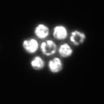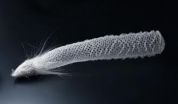INFORMATION:
Other authors on the study included COPPER Center researchers Jessica B. Long, Pamela R. Soulos, Xiaomei, Jeph Herrin, Kevin D. Frick, Anees B. Chagpar M.D., Harlan M. Krumholz M.D., James B. Yu M.D., and Joseph S. Ross M.D.
The study was funded in part by the Yale Office of Student Research.
Citation: Health Affairs http://content.healthaffairs.org/content/34/4/592.abstract *Link will be active when embargo lifts.
With breast cancer treatment, you do get what you pay for
2015-04-06
(Press-News.org) Despite concerns about the increasing costs of treating illnesses like breast cancer, higher treatment costs are linked to better survival rates, according to a study by Yale School of Medicine researchers in the Cancer Outcomes Public Policy and Effectiveness Research (COPPER) Center at Yale School of Medicine and Yale Cancer Center.
The study appears in the April issue of Health Affairs.
"Our findings indicate that in some instances, newer and costlier approaches may be leading to improved outcomes in breast cancer patients," said senior author Cary P. Gross, M.D., professor of internal medicine at Yale and director of COPPER. "Now we need to tackle the harder questions about what we can afford to pay, and find out which treatments are effective for each patient."
Gross and his colleagues analyzed Medicare billing records of 9,708 women across the United States between the ages of 67 and 94, who were diagnosed with Stage II or Stage III breast cancer. The research team assessed trends in treatment costs and survival rates in two different eras: 1994 -- 1996 versus 2004 -- 2006.
The researchers found that over the course of a decade, Medicare costs for caring for women with Stage III breast cancer increased from $18,100 to about $32,600, while the five-year survival rate improved from 38.5% to 51.9%. Although the costs of caring for women with stage II breast cancer also increased substantially by over 40% (from $12,300 to $17,400), the improvement in five-year survival was more modest (67.8 to 72.5%).
"The cost increase was largely attributable to a substantial increase in the cost of chemotherapy and radiation therapy," said Gross, who is a member of Yale Cancer Center. "Regardless of the mechanism, the pattern is clear: Higher costs of breast cancer care have been accompanied by improvements in survival."
First author Aaron Feinstein, M.D., currently a resident in head and neck surgery at UCLA, said, "We view our findings as a glass half-full: survival is improving, although costs are rising substantially. We need research that can help us not only to develop new treatments, but to learn how to contain costs while we are advancing patient care."
ELSE PRESS RELEASES FROM THIS DATE:
Sound separates cancer cells from blood samples
2015-04-06
Separating circulating cancer cells from blood cells for diagnostic, prognostic and treatment purposes may become much easier using an acoustic separation method and an inexpensive, disposable chip, according to a team of engineers.
"Looking for circulating tumor cells in a blood sample is like looking for a needle in a haystack," said Tony Jun Huang, professor of engineering science and mechanics. "Typically, the CTCs are about one in every one billion blood cells in the sample."
Existing methods of separation use tumor-specific antibodies to bind with the cancer ...
Lead hokes the age
2015-04-06
06.04.2015: Rocks do not loose their memory during Earth history but their true ages might be distorted: even under ultra high-temperature metamorphic conditions exceeding 1200°C zircon maintains its lead content accumulated during radioactive decay of uranium and thorium.
Giga year old zircon crystals still contain lead in form of nanometre size spheres of pure lead. However, the inhomogeneous spatial distribution of the lead spheres might falsify ages determined from high-resolution Pb isotope measurement with ion probe.
Zircon is an ideal mineral for age determination ...
Under the microscope, strong-swimming swamp bacteria spontaneously organize into crystals
2015-04-06
Insects form swarms, fish school, birds flock together. Likewise, one species of bacteria forms dynamic, living crystals, says new research from Rockefeller University. Biophysicists have revealed that fast-swimming, sulfur-eating microbes known as Thiovulum majus can organize themselves into a two-dimensional lattice composed of rotating cells, the first known example of bacteria spontaneously forming such a pattern.
"The regular, repeated arrangement of the microbial cells shares the geometry of atoms within a mineral crystal, but the dynamics are fundamentally different; ...
Study suggests new role for gene in suppressing cancer
2015-04-06
Scientists at The University of Manchester have discovered that a previously known gene also helps cells divide normally and that its absence can cause tumours.
The glucocorticoid receptor (GR) has previously been shown to have a role in cell development, immune response and metabolism. It is found in almost every cell in the body. Many widely used drugs, including prednisolone, act through this protein.
The research from Manchester, to be published in the journal Proceedings of the National Academy of Sciences (PNAS), showed a new role for GR after the scientists ...
Neighborhood stigma affects online transactions, NYU researchers find
2015-04-06
The stigma associated with particular neighborhoods has a direct impact on economic transactions, a team of New York University sociologists has found.
Their study, which appears in the journal Proceedings of the National Academy of Sciences, shows that when sellers are seen as being from an economically disadvantaged neighborhood, they receive fewer responses to advertisements placed in online marketplaces.
"Advertisements identifying the seller as a resident of a lower-income neighborhood received significantly fewer responses than advertisements identifying the ...
Sea sponge anchors are natural models of strength
2015-04-06
PROVIDENCE, R.I. [Brown University] -- Life may seem precarious for the sea sponge known as Venus' flower basket. Tiny, hair-like appendages made essentially of glass are all that hold the creatures to their seafloor homes. But fear not for these creatures of the deep. Those tiny lifelines, called basalia spicules, are fine-tuned for strength, according to new research led by Brown University engineers.
In a paper published in the Proceedings of the National Academy of Sciences, the researchers show that the secret to spicules' strength lies in their remarkable internal ...
Study: Near-death brain signaling accelerates demise of the heart
2015-04-06
ANN ARBOR, Mich. - What happens in the moments just before death is widely believed to be a slowdown of the body's systems as the heart stops beating and blood flow ends.
But a new laboratory study by the University of Michigan Medical School reveals a storm of brain activity that erupts as the heart deteriorates and plays a surprising destabilizing role in heart function.
This near-death brain signaling may be targeted to help cardiac arrest patients survive. Most of the more than 400,000 Americans who experience cardiac arrest at home, at work or in public die without ...
Study reveals Internet-style 'local area networks' in cerebral cortex of rats
2015-04-06
Researchers sketching out a wiring diagram for rat brains -- a field known as "connectomics" -- have discovered that its structure is organized like the Internet.
For years, scientists looking for clues to brain function through its structure focused on what could be seen -- the brain's lobes, grooves and folds. Now, with a more comprehensive picture of how neurons connect to one another, they've discovered local networks of neurons nested into one another like shells.
"The cerebral cortex is like a mini-Internet," said Larry Swanson, professor at the USC Dornsife College ...
NIH-funded scientists identify receptor for asthma-associated virus
2015-04-06
Scientists funded by the National Institute of Allergy and Infectious Diseases (NIAID), part of the National Institutes of Health, have identified a cellular receptor for rhinovirus C, a cold-causing virus that is strongly associated with severe asthma attacks. A variant in the gene for this receptor previously had been linked to asthma in genetic studies, but the potential role of the receptor, called CDHR3, in asthma was unknown. The new findings help clarify the function of CDHR3 and point to a novel target for the development of prevention and treatment strategies against ...
Computers that mimic the function of the brain
2015-04-06
Researchers are always searching for improved technologies, but the most efficient computer possible already exists. It can learn and adapt without needing to be programmed or updated. It has nearly limitless memory, is difficult to crash, and works at extremely fast speeds. It's not a Mac or a PC; it's the human brain. And scientists around the world want to mimic its abilities.
Both academic and industrial laboratories are working to develop computers that operate more like the human brain. Instead of operating like a conventional, digital system, these new devices ...


